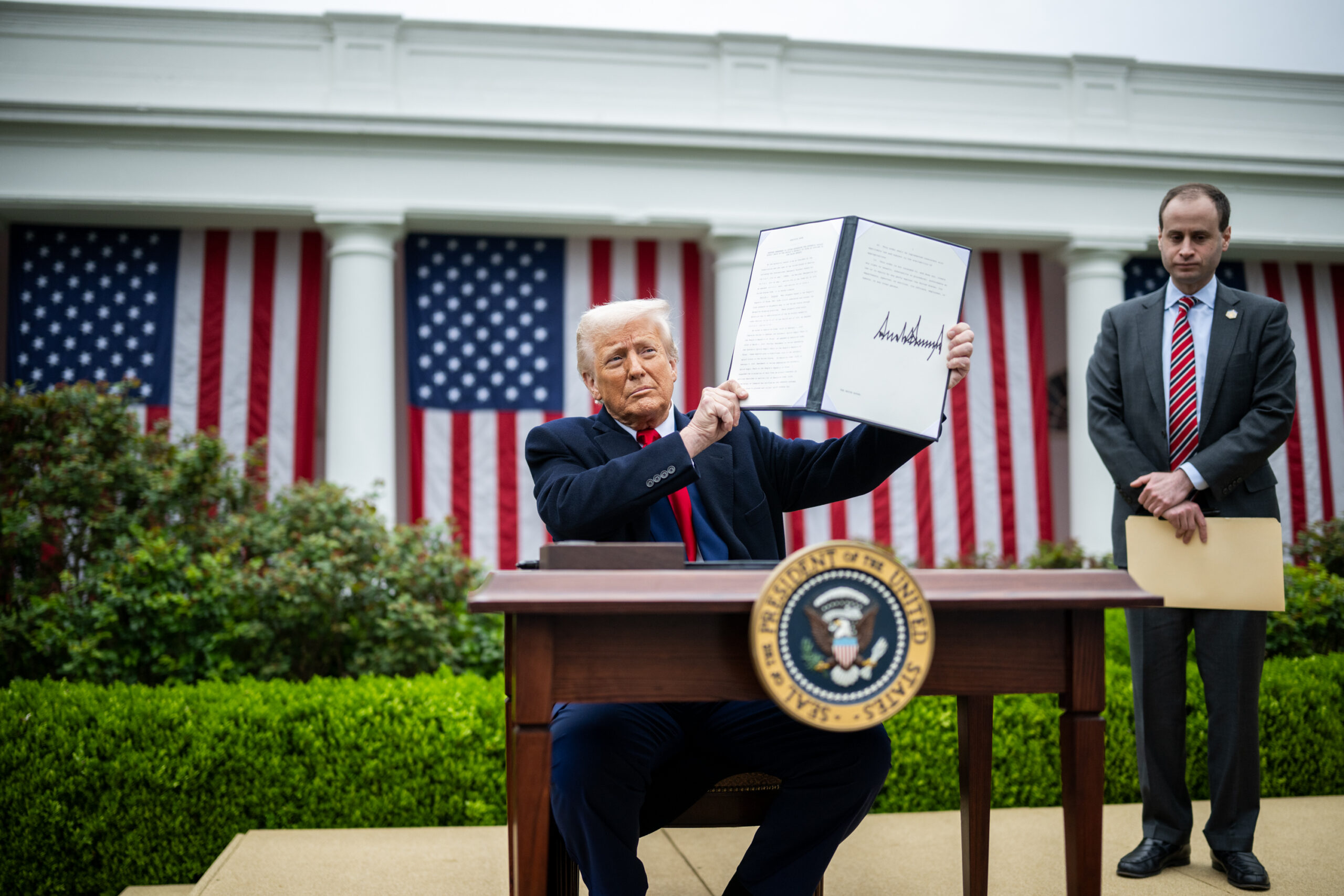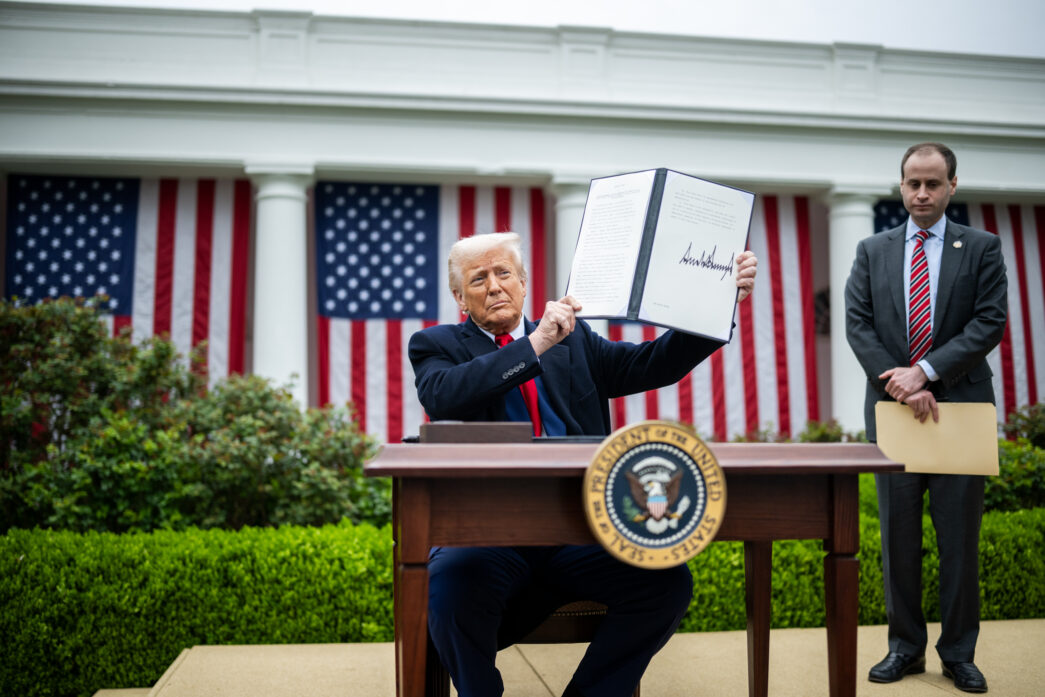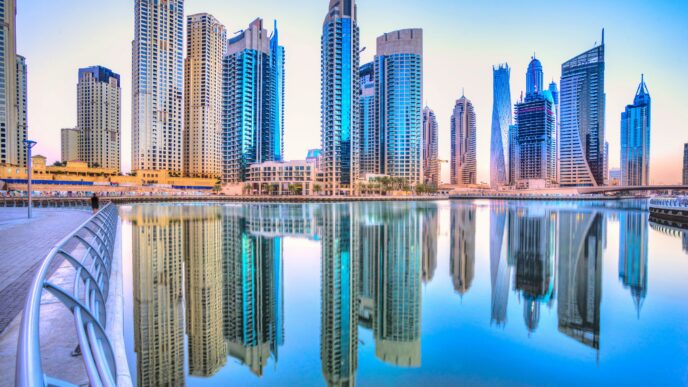Trump displays the executive order after signing
If anyone had said, 10 years ago, that we would one day see a retreat in globalisation and the dismantling of the world order as we have come to have it since the end of the Second World War, nobody would have taken the person seriously.
The second coming of President Trump has been both a tragedy and comedy at the same time, dominated by animated reality TV content that sometimes leaves people utterly shocked. Despite much of what we have seen within the short period, nothing could have prepared anyone for the spectacle that played out at the Rose Garden on April 2, where Trump slammed most countries of the world with tariffs, including the poor old penguins on Heard and Macdonald Island.
Today, we are experiencing a shift in world order and the end of multiallelism, or at least momentarily. In his reflection, the United Kingdom Prime Minister, Keir Starmer, declared that the world as we knew it has gone. In slamming the rest of the world with baseline and reciprocal tariffs of disproportionate dimension, Trump said, “For decades, our country has been looted, pillaged, raped and plundered by nations near and far, both friend and foe alike,”. He believes that his tariffs are an attempt to make the world pay for their many “sins against America” and even went on to declare April 2 as America’s liberation day.
In all the responses I have seen to the tariff madness, there is none that is as apt as the one by 83-year-old Professor Richard D. Wolff, who said the things you hear President Trump say are, quite frankly, things you would not expect to hear from an undergraduate of maybe 3 weeks and that this was more about Trump’s self-promotion than it is about the American people.
Advertisement
The main challenge, as I see it, is not just Trump’s faulty economic assumptions; it is more about how he arrived at the tariffs for different countries. In arriving at the tariffs for each country, Trump and his advisers considered America’s deficit relative to each country and then halved it to arrive at who gets what. In addition to oversimplifying such an important issue, he also refused to acknowledge the fact that we are in a more interconnected and integrated world, where his tariffs, which he claims were originally designed to protect US domestic industries and consumers alike, would now inadvertently hurt them in the form of high production costs, higher consumer prices, inflation and a global recession.
The idea that you can use tariffs to whip everyone into line is flawed because there are things America would never be able to produce efficiently. That is the idea guiding free trade because if America could produce everything efficiently, US companies like Apple, Boeing and Nike would not need to assemble or source production parts elsewhere. Some of the countries involved in their value chain, such as Vietnam, China and India, are the ones worst hit by the Trump tariffs.
In a tariff system, no one benefits; that much has been established with the Smoot-Hawley Tariff of 1930, which led to a major trade war between America and its allies and a global depression. As with Smoot-Hawley, the outcome of Trump tariffs is not likely to be any different, and worse still, the Trump tariffs are like never seen before. Already, the markets are bleeding; we are witnessing major selloffs, global stocks have plunged, threatening the fear of a possible recession. Crude oil prices have also fallen below $60 for the first time since 2021. There are fears that that retaliatory tariffs from other countries could spark the beginning of a major trade war.
Advertisement
Since the Second World War, there is no country that has enjoyed far greater economic prosperity than the United States, and this has been on the back of free trade. While Trump’s argument for the protection of local industries is valid, tariffs are meant to be short-term strategies, applied in specific instances, to serve as anti-dumping measures. There are also non-tariff barriers, like quotas and embargoes, that can be negotiated on a case-by-case basis. But a blanket tariff is certainly the beginning of an economic apocalypse, the end of which no one can foretell.
Nigeria is one of the countries that was affected by the new tariff regime; Trump slammed Nigeria with a 14 per cent tariff. The United States is one of Nigeria’s biggest trading partners, averaging $5–6 billion annually, with oil exports constituting 90 per cent of the exports.
Although it appears the US may have exempted energy imports from the list of sweeping tariffs, there are fears that the value of Nigeria’s net exports to the US may drop and impact Nigeria’s overall trade balance and foreign exchange earnings, which are necessary for stabilising the economy. The price of oil has also fallen below the budget benchmark, and this increases fear of how Nigeria would fund its budget. It may also expand an already wide budget deficit and necessitate more borrowing.
In the current situation, Nigeria is confronted with at least three choices; it can either capitulate, negotiate, or retaliate. Looking at it more critically, Nigeria is not in a strong position to take on the US with retaliatory tariffs. In that sense, what Nigeria can do is to attempt to get a trade deal with the US, similar to what the EU has proposed: zero-for-zero tariffs. In the medium term, Nigeria must locate new trade partners and enter into new trade agreements and renegotiations with other countries or trading blocs.
Advertisement
The world as we used to know it is no more. Every country, including Nigeria, must now brace up and plan for a new world under Trump. Surely, there are still opportunities in this cloud of despair.
Awogbenle, a Development and Public Policy Professional, writes from United Kingdom. He can be reached via [email protected].
Views expressed by contributors are strictly personal and not of TheCable.













